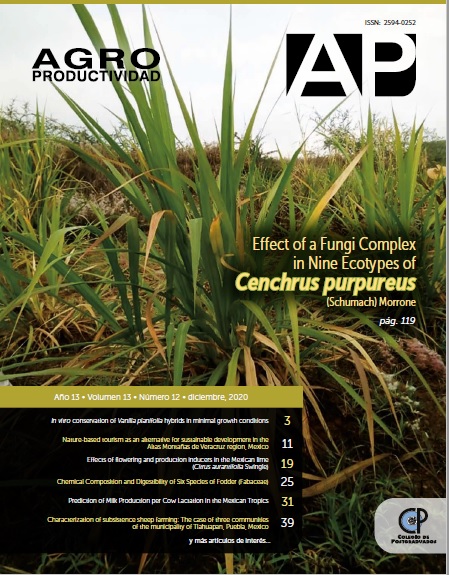Productive behavior of sheep fed with soy (Glycine max L.) forage
##plugins.themes.bootstrap3.article.main##
Keywords
Glycine max, sheep, soybean fodder, tropics.
Resumen
Objective: To evaluate the productive behavior of Creole sheep in the tropics fed a whole food diet that includes soybean (FS, Glycine max) fodder at different phenological stages.
Methodology: The treatments T1: control, T2: 30% (SF-56 d), T3: 30% (SF-68 d), T4: 30% (SF-85 d), T5: 30% (SF-110 d) were assigned randomly to 30 male Creole sheep (15.51±1.6 kg LW). The experiment lasted 56 d. The variables evaluated were: dry matter consumption (DMC), daily weight gain (DWG) and feed conversion (FC). The experimental design was
completely randomized and the averages of the treatments were compared using the Tukey test.
Results: Differences (p<0.05) were found in DMC, DWG and FC. The DMC was lower (p<0.05) in the control group. The DWG was higher in the animals that consumed soybean fodder compared to the control group (0.205 vs 0.121 kg d-1). The FC decreased (p<0.05) 51% in T3 (SF 68 d), with respect to the control group.
Study Limitations: The nutrient contribution of soybean fodder is based on the phenological stage of the plant. Likewise, producers in the tropical region have scarce knowledge about how to incorporate it in the feeding of small ruminants.
Conclusions: The inclusion of 30% of soybean fodder at 68 d of age in a whole food diet improves the productive performance of the lambs because it increases daily weight gain and decreases feed conversion.

